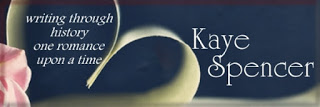Ranger Jim's Ramblings for November.
I'm going to address a controversial subject, which seems to wax and wane over the years, but is always at least a minor undercurrent in discussions of the western genre. That is, the theme of homosexuality in Westerns, particularly in the pulps and paperbacks.
For this post, I'm not going into the modern era, the times of
Brokeback Mountain. Not to split hairs, but the two male lovers in that film were sheepherders, not cowboys. I'm going back to the era of the pulps, and the earlier period of those.
Two incidents inspired me to address this issue. One was when a high school classmate, who is gay, and a university library director in Louisiana, was a judge for an award in a gay novel competition. One of the books happened to be a traditional style Western, but the protagonists were both gay. My friend sent me the book after the contest was over, to get my opinion. I told him that, not even looking at the homosexual angle, it was just a very poorly written book. He agreed.
The other was when I read Jackson Lowry's excellent entry in the
West of the Big River series, The Artist, a tale about a segment of Charlie Russell's life. In this book, two of Russell's cowboy pards are also homosexual lovers. None of the other men seem to care, in fact, they just accept the situation as nothing out of the ordinary.
There seem to be two main schools of thought on homosexual themes in Westerns. The first school, which I'll call the traditionalists, insist there is now sign of homosexuals in any western ever written, period. The other school, which for lack of a better word I'll call the radicals, see homosexual themes in almost every scene or event in a western. As usual, the truth is somewhere in between. Where it truly lies is impossible to determine.
For example, there is an iconic photograph from the 1880s or 1890s, taken of a group of Kansas cowboys taking baths in a pond. While this picture is just a depiction of everyday life out on the prairies, many of the radical group insists the photo shows a bunch of gay cowboys doing their thing. Highly unlikely, but boy howdy, how the meaning of
gay caballero has changed.
On the other hand, while the traditionalists will try and deny it, there is no question that homosexual themes did appear in many stories in the western pulp magazines. I'm going to use two examples, both from
Texas Rangers Magazine, and both involving the main character, Jim Hatfield. I don't have the issues at my fingertips, since they're now in the Texas Ranger Museum archives in Waco, so I can't provide the exact dates or story titles. However, both these examples have stuck in my head over the years, as they are so blatant, and so obvious.
The first is from an early Hatfield story, from the late 1930s or very early 1940s. In this one, Hatfield is riding along when he comes across a cowboy, who is stripped to the waist and staked out over an anthill. Hatfield frees the cowboy, so far so good. However, he then kneels down in front of the cowboy and orders him to lower his pants and drawers. There's even an illustration of the scene, where, while the cowboy is ready to unbutton his pants, Hatfield's head is in exactly the right position to leave no doubt as to exactly what the author is implying. The scene ends with the cowboy jumping in the river, ostensibly to drown the ants on him and cool their bites.Hopefully that meant the ants' bites.
The second is from a later issue, in the 1950s. In this one, Hatfield has stopped at a pond, and is ready to take a bath. Someone takes a shot, which Hatfield believes was meant for him, but in truth was aimed at another man. Hatfield jumps out of the pond, grabs a rifle, and what ensues is a fairly long scene of a naked Hatfield, rifle in hand, chasing the gunman through the woods. He stays naked even after the chase is over, and while going through the bodies for evidence.
So, homosexuality in the western novel? I leave that for you, the readers of this blog, to decide. However, from what I have read, there is no question that at least a thread of homosexuality runs through the western genre. The traditionalists will vehemently deny it, the radicals will try to push their agenda that it was rampant, but it's there, albeit a very minor subject.. After all, homosexuality was as much a factor throughout history, including the frontier west era, as it is today.
To conclude, a few years ago, a co-worker of mine and her husband went to a Christmas party. They'd had a few drinks. On their way home, Gene Autry's classic
Rudolph the Red-Nosed Reindeer came over the car radio. Nancy's husband said to her, "You know, Autry's
Back in the Saddle Again is really a gay anthem." When she told him it couldn't be, he came up with a wonderful parody of what the lyrics meant, from a homosexual point of view. It's absolutely hysterical, and proves the point that anyone who wishes can find homosexual themes in just about any piece of literature, music, or art. I just might reveal the "alternative" meaning next time around, unless some of you might find it really offensive.
Until next time, Happy Thanksgiving!
"Ranger" Jim





























